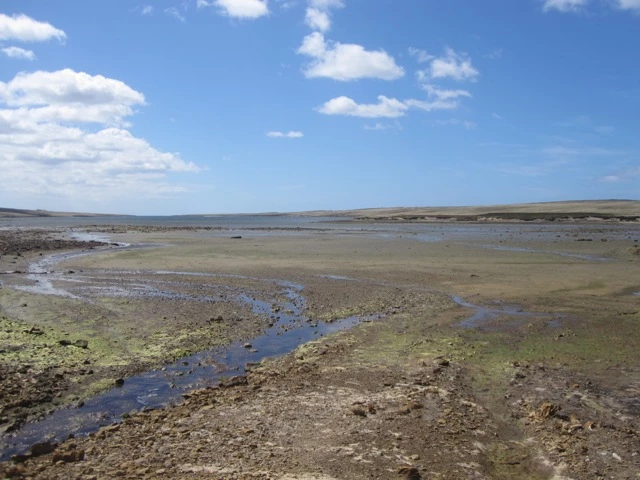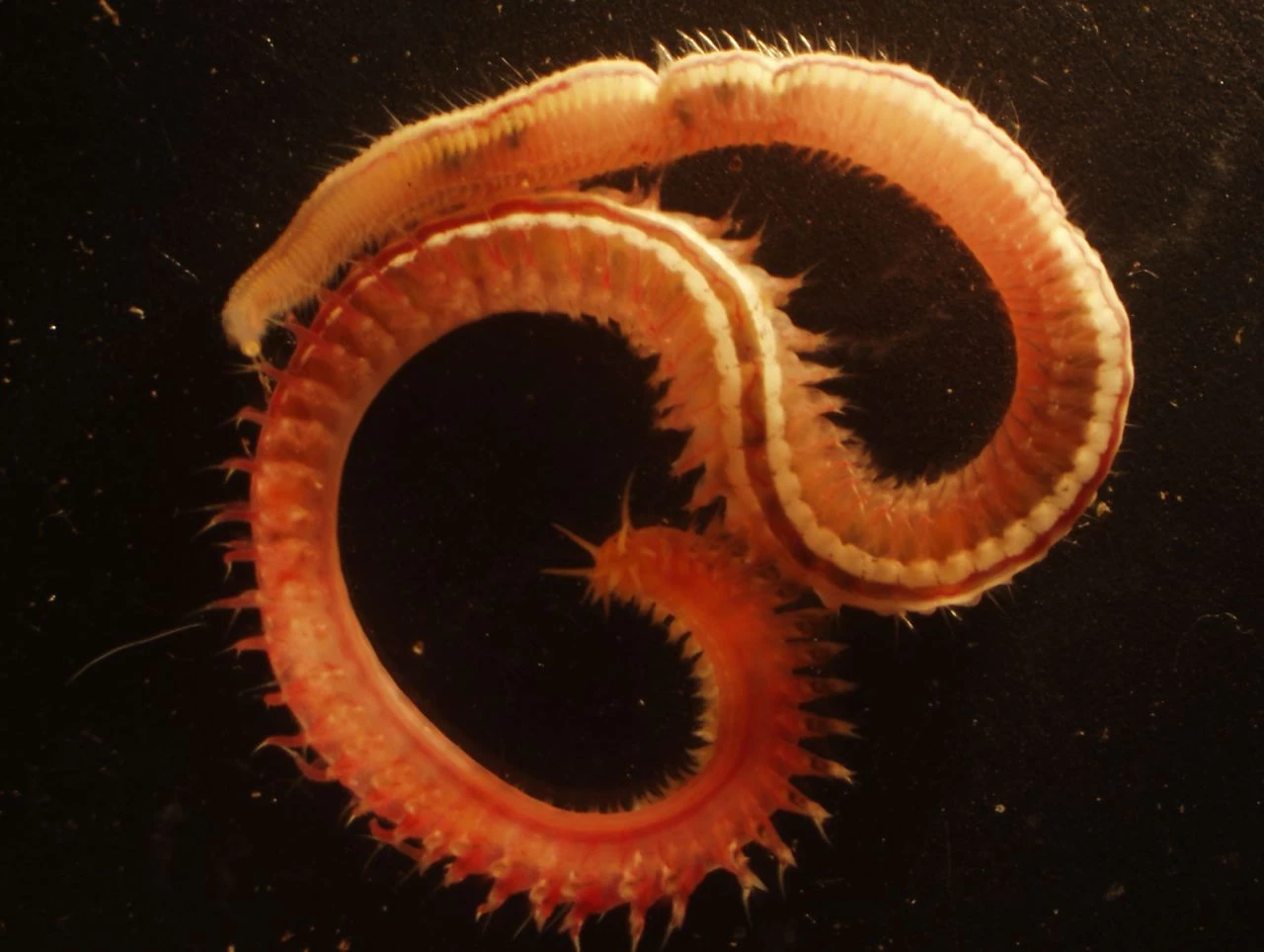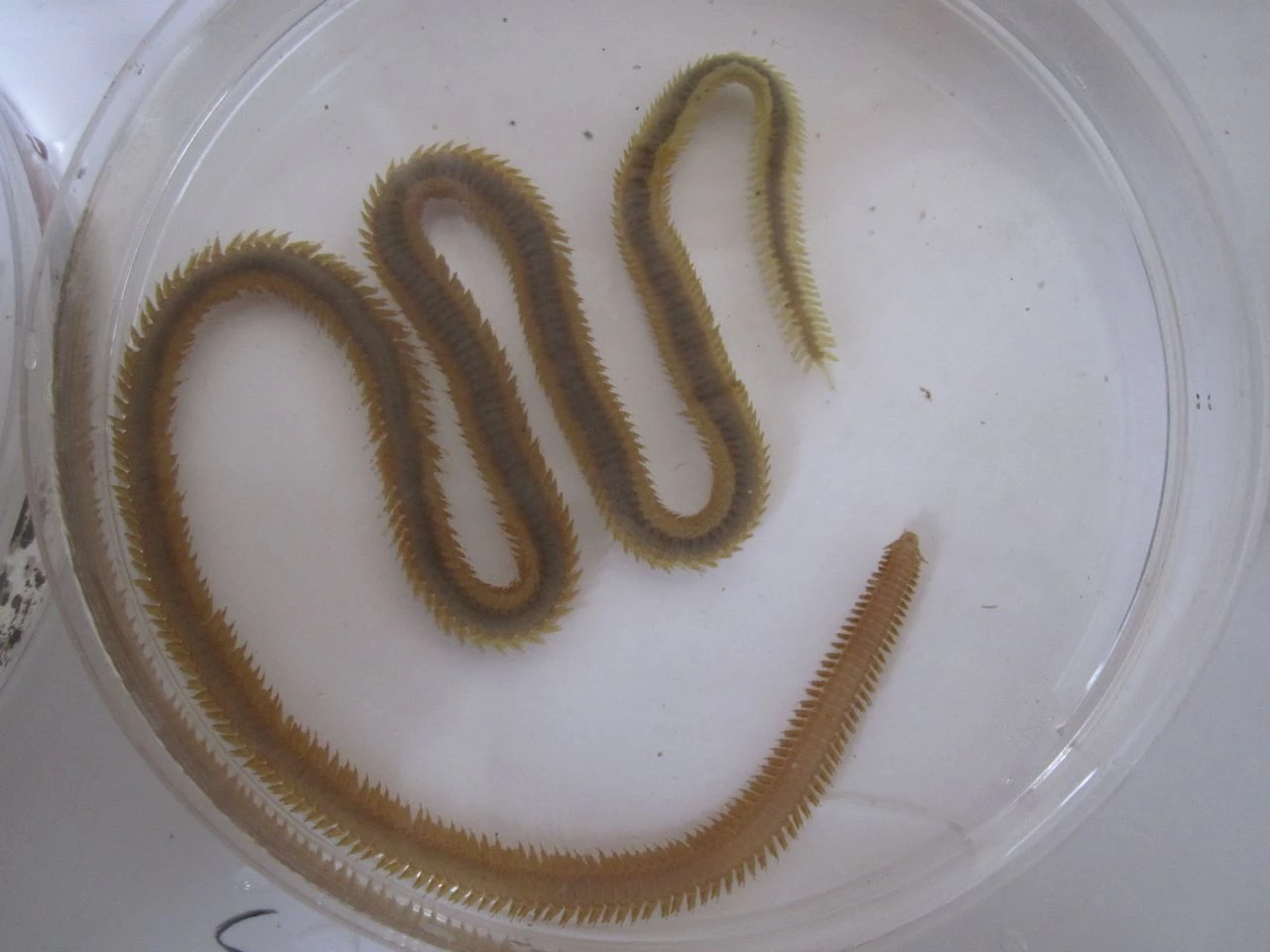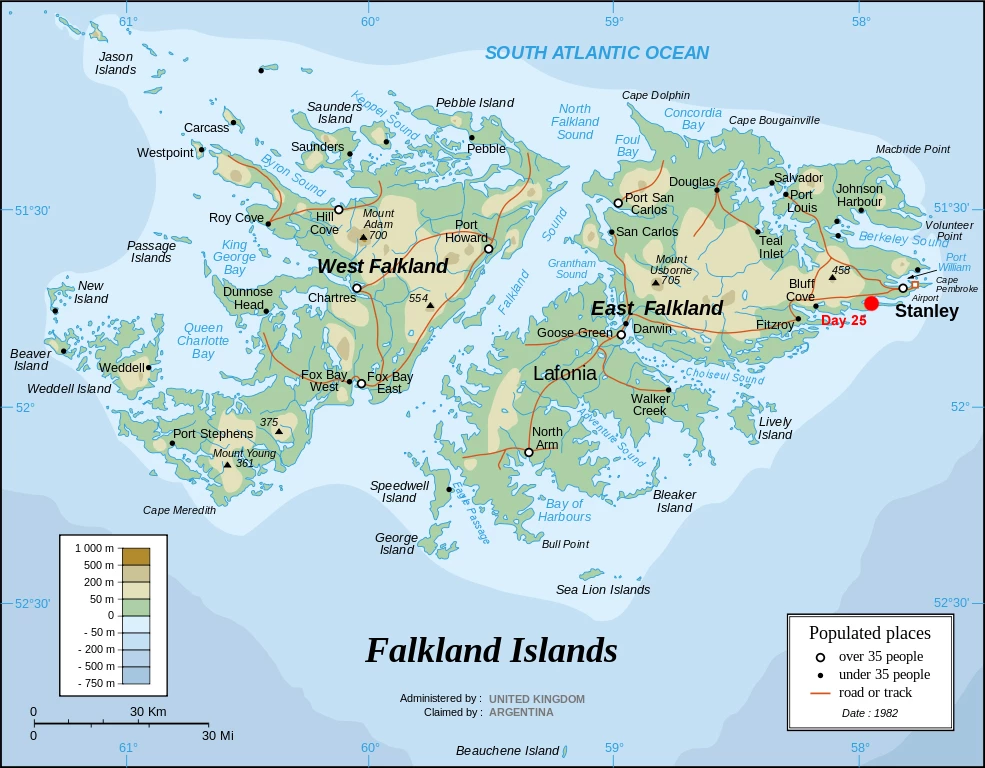Polychaete research in the Falklands by Teresa Darbyshire - day 25
, 9 December 2011
Wow, what a glorious day! It’s a bank holiday here but unlike most in the UK, a bank holiday with fantastic weather. The temperature is 18degC, that may not sound that high but it feels very warm and the burn factor is quite high. It’s been strange driving along listening to the radio reporting the weather in the UK which I hear is particularly bad right now. I am very thankful for being where I am!
This morning’s sampling site was Sand Bay, near Port Harriet, about a half hour drive out of Stanley. The bay opens out quickly to a wide area of sand (photo 1). The sand varies quite widely across the bay from very coarse to fine, sometimes with gravel or rocks and in other places just sand. The animals themselves also seemed to change accordingly so it was worth dotting my sampling sites around the bay.
Although at first this bay didn’t seem that much different to several of the other sites I’ve been to, a couple of the samples turned up some very different animals.
The most interesting was in a patch of the ‘solid’ sand, no stones but with some layers of old plant material as you dug down. Burrowing into those layers were a different sort of ragworm to any of those I’ve seen in any of my other samples, with striking red and white colours along its body (photo 2). I spent a while collecting several of these as they were obviously a different species to those I already had.
There was also a different type of paddleworm, the longest yet (photo 3), from one of the other sample spots. I only found one of these though.
By the time the tide turned, I had a large collection of pots from the different sites around the bay and a few animals that I already knew would be new to my list. As I wanted to get some photos of the ragworm with its colours I decided to go back into Stanley to the Fisheries lab rather than head straight out towards Darwin. I wasn’t that far away and it was worth the time. After a quick photo session I then got back on the road again, back out past where I had already been that morning and on to Darwin which would be nearly a 2 hour drive.
As it was such a warm and dry day I had the window open slightly but wasn’t prepared for just how much dust was created driving along the gravel roads. It was only when I arrived here at Darwin that I realised that the car, both inside as well as out, and myself, were coated in the dust.
I have been given instructions on how to get to the two creeks I want to sample tomorrow and hopefully they will also provide some interesting finds to end the week.



